7.8 /10 1 Votes
86% Rotten Tomatoes Directed by Giuliano Montaldo Cinematography Silvano Ippoliti Director Giuliano Montaldo Awards Cannes Best Actor Award | 7.9/10 IMDb 3.4/5 MyMovies Music by Ennio Morricone Initial release 16 March 1971 (Italy) Music director Ennio Morricone | |||||||||||||||||||||||||||||||||
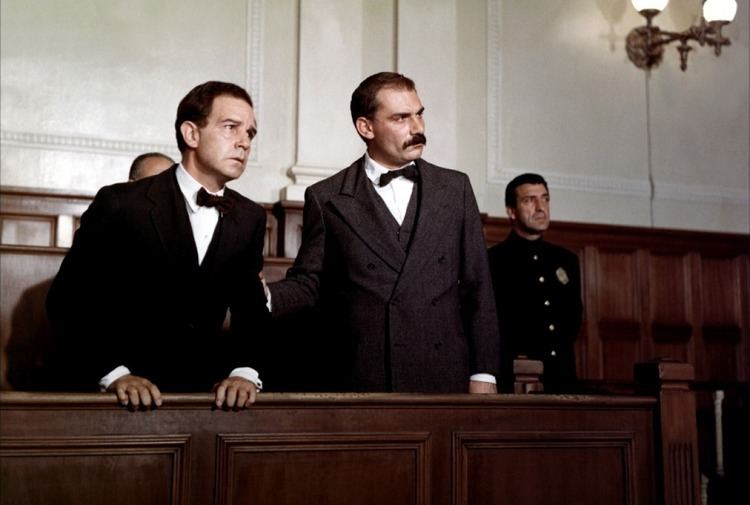 | ||||||||||||||||||||||||||||||||||
Produced by Arrigo Colombo
Giorgio Papi Written by Vicente Aranda
Fabrizio Onofri
Giuliano Montaldo
Mino Roli
Ottavio Jemma Starring Gian Maria Volontè
Riccardo Cucciolla
Cyril Cusack
Rosanna Fratello
Geoffrey Keen
Milo O'Shea Story by Giuliano Montaldo, Fabrizio Onofri, Mino Roli Cast Gian Maria Volontè, Riccardo Cucciolla, Cyril Cusack, Rosanna Fratello, Milo O'Shea Similar Anarchism movies, Trial movies, Movies about capital punishment | ||||||||||||||||||||||||||||||||||
Sacco e Vanzetti is an Italian docudrama written and directed by Giuliano Montaldo that premiered in Italy on 16 March 1971. The story is based on the events surrounding the trial and judicial execution of Nicola Sacco and Bartolomeo Vanzetti, two anarchists of Italian origin, who were sentenced to death by a United States court in the 1920s. The film's musical score was composed and conducted by Ennio Morricone with the three-part ballad sung by Joan Baez. The film is mainly shot in colour although it both starts and finishes in black and white, and also includes period black and white newsreels.
Contents
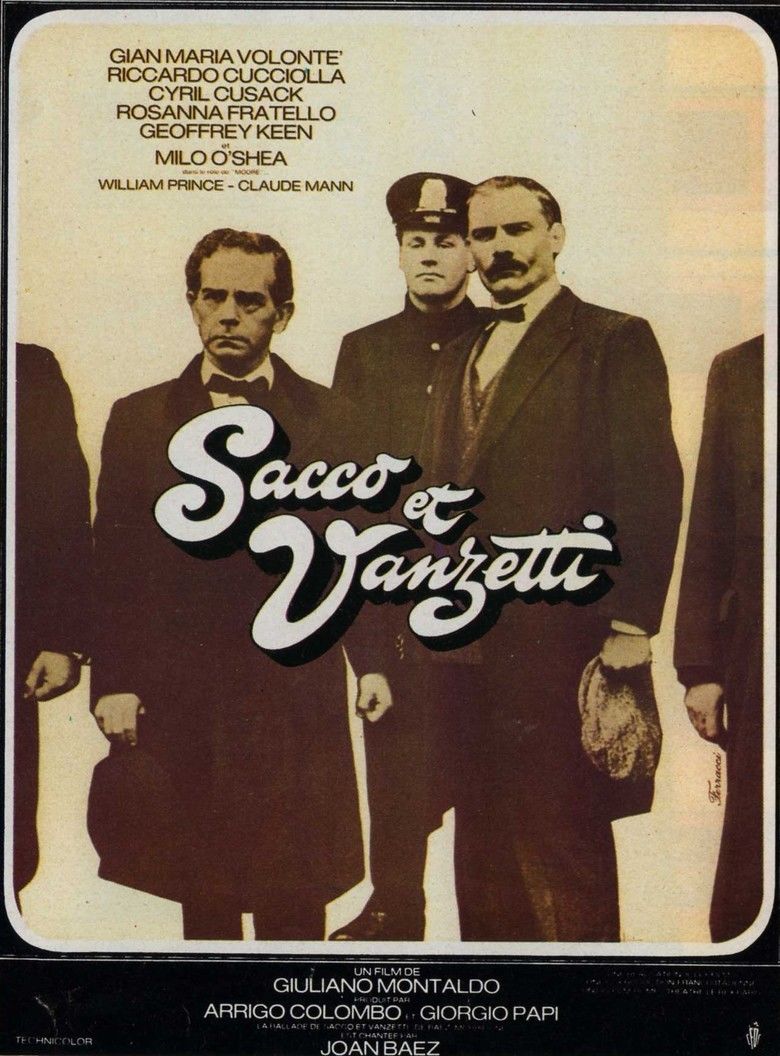
Sacco e vanzetti 1971 discorso bartolomeo vanzetti
Cast

Music
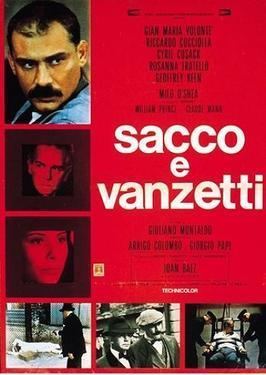
The film's soundtrack was composed and conducted by Ennio Morricone with song lyrics by the American folk singer Joan Baez. For the lyrics of The Ballad of Sacco and Vanzetti Part 1, Baez makes use of Emma Lazarus' 1883 sonnet The New Colussus the lines of which appear inscribed on a bronze plaque in the pedestal of the Statue of Liberty.
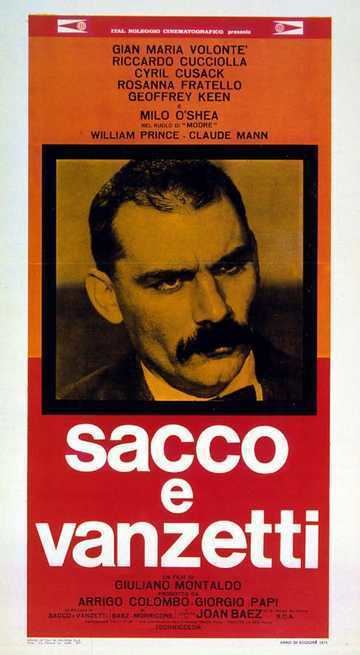
The song, Here's to You, is sung at the end of the film. For the lyrics of Here's to You Baez made use of a statement attributed to Vanzetti by Philip D. Strong, a reporter for the North American Newspaper Alliance who visited him in prison in May 1927, three months before his execution.
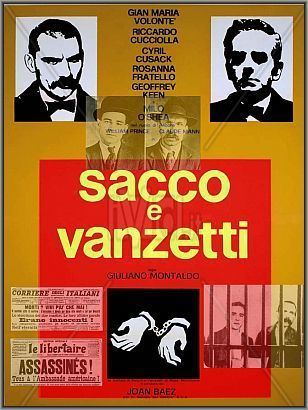
If it had not been for these things, I might have live out my life talking at street corners to scorning men. I might have died, unmarked, unknown, a failure. Now we are not a failure. This is our career and our triumph. Never in our full life could we hope to do such work for tolerance, for justice, for man's understanding of man as we now do by accident. Our words—our lives—our pains—nothing! The taking of our lives—lives of a good shoemaker and a poor fish peddler—all! That last moment belongs to us—that agony is our triumph.
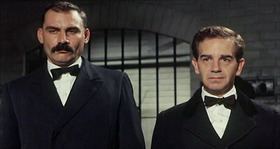
Here's to You is also included in several later films notably in the 1978 quasi-documentary film Germany in Autumn where it accompanies footage of the funeral march for Red Army Faction members Andreas Baader, Gudrun Ensslin, and Jan-Carl Raspe who had committed suicide in prison.
The soundtrack was released in a downloadable format in 2005 featuring fourteen tracks
- Speranze Di Liberta'
- La ballata di Sacco e Vanzetti, Pt. 1
- Nel Carcere
- La ballata di Sacco e Vanzetti, Pt. 2
- Sacco E Il Figlio
- Speranze Di Liberta' (#2)
- Nel Carcere (#2)
- La ballata di Sacco e Vanzetti, Pt. 3
- Liberta' Nella Speranza
- E Dover Morire
- Sacco E Il Figlio (#2)
- La Sedia Elettrica
- Liberta' Nella Speranza (#2)
- Here's to You
Reception
Roger Ebert described the film as 'one of the best' of the year. Ebert draws particular attention to the way that Montaldo handles his courtroom scenes; 'a tricky area for any director' but one which the director handles in an interesting and maybe even brand-new way'. Ebert writes '[Montaldo] has already made us aware of the crowds surging outside the courthouse, and in the [contemporary newsreel sequences on the] streets of world capitals. Then, inside the courtroom, he stays away from the conventional straight-on shots of the observers. Instead, the people on the other side of the railing are seen in angular long-shots, so that when outbursts and commotions take place, the courtroom railing itself acts like a police line and the crowd seems to yearn against it. Without ever making too much of a point of it, Montaldo visually equates the inside and the outside action, and it works.' With regard to the historical accuracy of the film Ebert considers the film to be 'sometimes accurate, sometimes biased and sometimes even fictional in its telling of the story, but no matter. The versions of the "truth" in the Sacco-Vanzetti case are so various, anyway, that a factual retelling would probably be beyond the capabilities of a feature film. Sacco and Vanzetti are beyond being helped by any film, for that matter, and the purpose of this film, ... is more to alert us to how law can be used as a blunt instrument of politics [than other contemporary films of the day]'.
Despite his friends' criticism that the film is 'just another left-wing, European blast at the United States', Vincent Canby, in a review for the The New York Times, praises the film, if for nothing more than calling 'to our attention a terrible chapter in American history'. Canby, however, dismisses the film as a simplication that 'takes the form of not particularly stylish political cartooning. This is especially true of the supporting performances he has gotten from Cyril Cusack as Katzman, the prosecuting attorney, and Geoffrey Keen, as Judge Thayer, the judge who presided at the trial and, under Massachusetts law, had the unfortunate right to rule on a second trial when new evidence was presented to him. They are blandly evil, cutout figures, as are all of the intimidated witnesses, bigoted observers and political opportunists who swarm across the film.' Canby also decries the film's soundtrack which he describes as 'absolutely dreadful' with Baez's voice 'used to certify the movie's noble intentions, but through the cheapest of means'.
Awards
In May 1971, Sacco e Vanzetti was a competition entry at the 24th International Film Festival of Cannes where, for his portrayal of Nicola Sacco, Riccardo Cucciolla won the award for Best Actor. Also that year, Rosanna Fratello was awarded Best Young Actress by the Association of Italian Film Journalists for her portrayal of Rosa Sacco (the wife of Nicola Sacco). In 1972, Morricone won from the Association of Italian Film Journalists the Nastro d'Argento ( Silver Band ) prize in the division Best Original Score.
